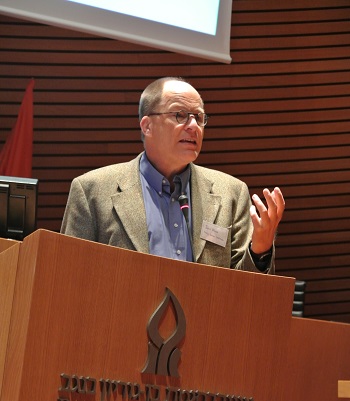 John Glass is leader of the Synthetic Biology and Bioenergy Group of the J. Craig Venter Institute (JCVI), adjunct professor of the University of Maryland at College Park Cellular and Molecular Biology Program, and member of the Global Viral Network Scientific Leadership Board.
John Glass is leader of the Synthetic Biology and Bioenergy Group of the J. Craig Venter Institute (JCVI), adjunct professor of the University of Maryland at College Park Cellular and Molecular Biology Program, and member of the Global Viral Network Scientific Leadership Board.
He studied biology and genetics at the University of North Carolina at Chapel Hill and did his Ph.D. on RNA virus genetics at the School of Medicine at the University of Virginia. Then, as post doctoral fellow and faculty member at the Microbiology Department of the Univ. of Alabama, he studied polio virology and mycoplasma pathogenesis (until 1998). While on a sabbatical leave (1995-7) he sequenced the genome of Ureaplasma and began to study Mycoplasma genomics. From 1998-2003 Glass was a researcher in the Infectious Diseases Research Division of the pharmaceutical company Eli Lilly, where he directed a hepatitis C virology group and a microbial genomics group. He joined the J. Craig Venter Institute in 2003.
Interview themes:
*The lure of simple systems
*Joining the J. Craig Venter Institute
*The minimal cell
*Prokaryotes and eukaryotes
*Recapitulating cellular evolution
*From genome sequencing to synthesis - the underlying philosophy
*Applications
*J. Craig Venter
*Pure and applied research
*Ethical issues
*Basic research, origin of life
 Interview with John Glass.pdf
Interview with John Glass.pdfInterview Excerpt
UD: You say that though Mycoplasma mycoides is a very fast-evolving organism, these genes are ubiquitous in all other organisms. That means that they are highly conserved in evolution.
JG: Yes. These genes perform the core functions necessary to be alive.
UD: They don't change?
JG: The functions don't change; the genes themselves change. A Uracil-N-glycosylase might need to be a little bit different if you live in a urogenital tract where it's 37 degrees all the time, than you would need if you live in the ocean, or in the dirt, or in a thermal vent in the ocean. So for 80% of the genes in our genome, they look sort of like some other gene. But another 20% really doesn't look like anything that we know what it does. But by computationally comparing the amino acid sequence of different proteins you can see that these proteins have, in essence, a common ancestor. And with common ancestors, you generally assume that they perform the same function – not always, but usually.